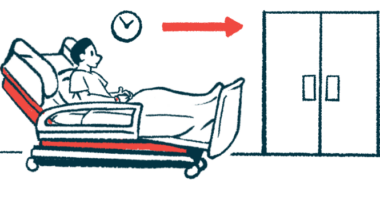
Eneboparatide for hypoparathyroidism
Last updated June 20, 2025, by Margarida Maia, PhD

Eneboparatide is an experimental treatment for chronic hypoparathyroidism being tested as a subcutaneous (under-the-skin) injection. It was originally developed by Amolyt Pharma, which has been acquired by AstraZeneca.
Hypoparathyroidism occurs when the body does not produce enough parathyroid hormone (PTH). This hormone is essential for maintaining balanced levels of calcium and phosphorus in circulation. Without enough PTH, levels of calcium decrease and those of phosphorus increase. Hypoparathyroidism symptoms, which are mostly linked to calcium deficiency, include muscle cramps, a feeling of pins and needles in the extremities and around the mouth, and fatigue.
Eneboparatide, previously known as AZP-3601, works by binding to the receptor for PTH and mimicking its action. It is expected to normalize blood calcium levels and limit urinary calcium excretion, thus easing hypoparathyroidism symptoms.
The therapy has received fast track designation in the U.S. and orphan drug designation in both the U.S. and the European Union.
Therapy snapshot
| Treatment name: | Eneboparatide |
| Administration: | Being tested as a daily subcutaneous injection |
| Clinical testing: | In Phase 3 clinical testing for chronic hypoparathyroidism |
How will eneboparatide be administered?
In clinical trials for chronic hypoparathyroidism, eneboparatide has been given daily by subcutaneous injection starting at a dose of 10 micrograms or 20 micrograms per day and increasing to 80 or 60 micrograms per day, respectively. An ongoing Phase 3 clinical trial is using prefilled pens designed for single-patient use.

Eneboparatide in clinical trials
Clinical testing built upon Phase 1 trial data from 104 healthy volunteers, which showed that eneboparatide provided a sustained increase of calcium in the blood when given in daily doses. Based on those results, evaluations of the treatment began in adults with chronic hypoparathyroidism — meaning they had a history of hypoparathyroidism for at least 12 months.
- In an open-label Phase 1/2 clinical trial (NCT05239221) involving 28 patients, eneboparatide normalized calcium levels within three months of treatment, regardless of whether the starting dose was 10 or 20 micrograms per day. Most patients were able to stop taking oral supplements — typically used to treat hypoparathyroidism — with 88% discontinuing calcium and 92% discontinuing active vitamin D, which helps the body absorb calcium.
- An ongoing Phase 3 clinical trial, dubbed CALYPSO (NCT05778071), is comparing eneboparatide, injected under the skin using a prefilled pen starting at a daily dose of 20 micrograms, against a placebo in 202 patients. CALYPSO met its main goal, with eneboparatide outperforming the placebo in normalizing blood calcium and helping patients achieve independence from oral calcium and active vitamin D within 24 weeks (about six months) of treatment. After the placebo-controlled period, patients could choose to continue or begin treatment with eneboparatide as part of an open-label extension.
Eneboparatide side effects
The side effects reported in clinical trials of eneboparatide in people with hypoparathyroidism include:
- reactions at the injection site
- hypercalcemia (high blood calcium)
- hypocalcemia (low blood calcium)
- hypercalciuria (excess calcium in urine)
- abdominal pain
- muscle cramps
- high blood lactate dehydrogenase, a sign of tissue damage.
Hypoparathyroidism News is strictly a news and information website about the disease. It does not provide medical advice, diagnosis, or treatment. This content is not intended to be a substitute for professional medical advice, diagnosis, or treatment. Always seek the advice of your physician or other qualified health provider with any questions you may have regarding a medical condition. Never disregard professional medical advice or delay in seeking it because of something you have read on this website.
Recent Posts
- New 5-tier system aims to better guide hypoparathyroidism treatment
- Reflections on gratitude and hope for the new year
- Rethinking my holiday plans with hypopara limitations in mind
- Hypopara’s unpredictability causes surprises during treatment
- Online tool predicts who’s at risk for chronic complication after surgery


